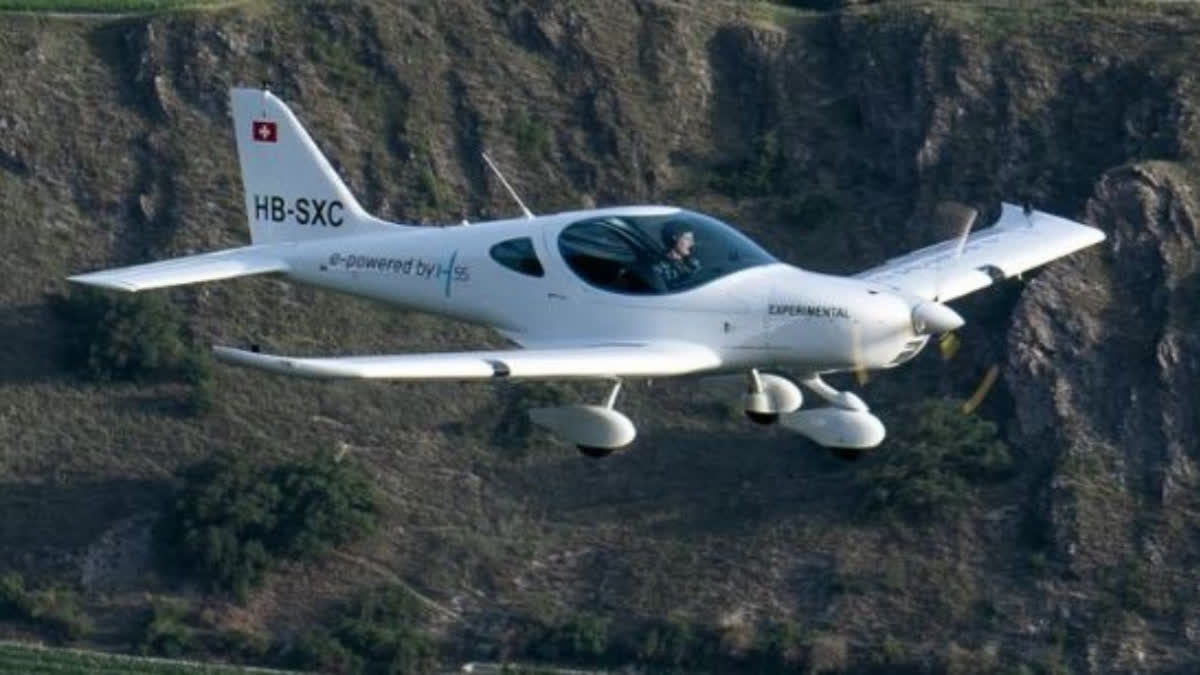New Delhi: Archer Aviation, backed by Stellantis and Boeing, is all set to launch its electric air-taxi in India by 2026, the Company's Chief Commercial Officer (COO) Nikhil Goel said on Sunday. In an exclusive interview with ETV Bharat, he added to operate these advanced aircraft, new pilots will be trained which would generate employment opportunities.
For commercial operations, Archer is in final stages of getting approvals from the Federal Aviation Administration (FAA) in the United States. The aircraft can carry four passengers at a time and a pilot for up to 100 miles (near about 160 kilometres), and cover in 7 minutes the same distance that would take 60-90 minutes in a car in New Delhi.
Initially, the fare for the electric air taxi service will be approximately $100 (around Rs 8,000) per passenger, he adds.
Excerpt for the full interview:
Q1. Archer aviation in partnership with InterGlobe is all set to revolutionise urban mobility by launching all-electric air taxi service. Can you brief us on this ?
Answer: Archer Aviation and InterGlobe Enterprises plan to launch an all-electric air taxi service in India by 2026, targeting major urban centers like Delhi, Mumbai, and Bengaluru. This service aims to leverage Archer's Midnight aircraft, designed for quick, efficient, and environmentally friendly urban transit. The partnership will focus on enhancing urban mobility with safe, sustainable, and low-noise air taxis, providing a revolutionary transportation solution.
Q2. How costly will be its fare? And from which cities or states will it start? Also, what are the future planning?
Answer: Initially, the fare for the electric air taxi service will be approximately $100 (around Rs 8,000) per passenger. This pricing aims to be competitive with premium ground transportation options. The service will commence in key cities like Delhi, Mumbai, and Bengaluru, with plans to expand as market acceptance and infrastructure development allow.
Q3. Can you please tell us more about its certification process, the countries that are using it and the safety of passengers? Also, how many person can these air taxis can carry at one time?
Answer: The certification process for Archer's electric air taxis involves rigorous safety and regulatory reviews by aviation authorities to ensure compliance with both local and international standards. In the U.S., we are currently rapidly progressing through the Federal Aviation Administration (FAA’s) certification requirements. Archer's Midnight aircraft can carry four passengers at a time, focusing on safety and efficiency for urban commutes.
Q4. These air taxis would require a different set of pilots. What is the update on that? And how many jobs will this service/sector genarate in the coming years?
Answer: To operate these advanced aircraft, a new pilots will be trained. Archer, in collaboration with InterGlobe, plans to develop training programs for pilots and other essential personnel. This initiative is expected to create a significant number of jobs across various sectors needed to support this new form of urban transport. One benefit of our technology, is that these aircraft are far easier to pilot than existing options such as helicopters, which can help us more rapidly advance pilots through training.
Q5. As these are electric air taxis, what is the biggest challenge involved in it and how has been the response from other stakeholders. Can you give us an additional details on it.
Answer: The biggest challenge for introducing Archer’s electric air taxis is educating the public on how this new form of transport can transform mobility today. This technology is highly anticipated by consumers in India in particular. A recent McKinsey consumer survey found that thirty-six percent of Indian consumers said they would definitely pay five times the price of their current transport mode to hop on an AAM vehicle for a trip to or from an airport. An additional 43% said they would pay double the price of their current transport mode. Our goal is to help solve the traffic problems the world’s cities are facing. The only way to do that is to be able to offer flights that are competitively priced with other options such as premium ridesharing. Over time, with scaled manufacturing, streamlined operations, and autonomy, our goal is to continue to reduce that price to the point.
Q6. How has been the communication with Ministry of Civil Aviation and DGCA?
Answer: We have already started working with our partner InterGlobe to initiate a productive collaboration with the DGCA and Ministry of Aviation.
Q7. Can you give us an estimate regarding the money involved in this Mega project?
Answer: While specific financial figures are under review, the project involves substantial investment in technology, infrastructure, and personnel. This includes financing the purchase of up to 200 Midnight aircraft and developing vertiport infrastructure to support operations in India’s major cities.




